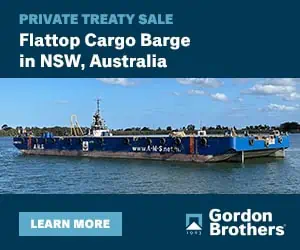Zelim, the Edinburgh based sea survival innovator, has officially launched the world’s first unmanned/manned remotely controlled person-in-water rescue vessel.
GUARDIAN, an 8.4m long, 2.5 wide aluminium hulled next-generation Fast Rescue Craft (FRC), was unveiled to the international maritime industry for the first time at the SMM Trade Fair, which is taking place this week in Hamburg, Germany.
Specifically designed for rapid deployment from a ship to recover both conscious and unconscious man-overboard casualties, the GUARDIAN FRC can operate in maritime conditions that conventional manned recovery solutions would find challenging or too dangerous to deploy.
Taking four years research and development, with input from the UK’s Maritime & Coastguard Agency and the US Coastguard, GUARDIAN incorporates Zelim’s type-approved SWIFT rapid rescue conveyor and ZOE, Zelim’s intelligent detection software for optimising search.
During a MOB event, GUARDIAN is instantaneously lowered into the water by way of a ship’s existing LARS davit installed at deck level. Once in the water, an Alamarin AJ285 waterjet powered by a single Bukh VGT 400HP motor speeds the rescue vessel along at a rate of 30-plus knots towards the casualty. GUARDIAN’S range is 15n miles with a six-hour endurance.
As it nears the person(s) in the water, the FRC lowers the integrated SWIFT and slowly proceeds towards the casualty who is then quickly recovered from the water by the rescue conveyor, which is specifically designed to grip and recover immersed casualties, whilst minimising the risk to casualties from the loss of hydrostatic pressure. With up to two survivors on SWIFT at any time, the conveyor is a continuous rescue system that doesn’t require reset whilst minimising the risk to rescuers.
Peter Lloyd, Zelim’s Director of Search and Rescue, said: “The key to the rescue of individuals from the water before they perish is speed. First you must find your casualty. Sea search is notoriously difficult with human performance subject to distraction and loss of attention, especially during a prolonged search. In Zelim’s aim to produce an unmanned rescue vessel, sea search had to be automated.”
The result of the product development was ZOE, a new software tool capable of providing instant detection and alerting of persons and objects that enter a field of view. ZOE is also capable of differentiating between a human in the water and other objects that might be present such as buoys, flotsam and jetsam. Providing real time location information and integrated with the GUARDIAN’s navigational system, the technology allows rescuers to see what the human eye cannot with visual cues overlayed on a simple display.
Given that about 40% of all man-overboard incidents result in fatality, with more than 1000 people falling overboard annually, the efficiency and simplicity of Zelim’s GUARDIAN in rescue missions cannot be understated.
“Sea survival is hugely dependent on the time it takes to retrieve individuals from the water, but inclement weather can prohibit the launch of manned rescue craft and lives are needlessly lost,” said Zelim founder and innovator Sam Mayall.
“Ship crews have little time to carry out an effective rescue before maritime conditions prevent the casualty from assisting in their own rescue. When rescue vessels approach, many survivors simply don’t have the strength to pull themselves to safety. This is even more difficult when they are unconscious or unresponsive. GUARDIAN has been designed to ensure more people can be rescued in the harshest of weather conditions.”
With capacity for 11 survivors (nine if GUARDIAN is deployed with a two-person crew), the lightweight FRC also benefits from AI-based person-in-water detection and alerting system.
While Zelim is marketing SWIFT and ZOE as standalone maritime safety and security tools, their integration with GUARDIAN demonstrates how easily the technology can mitigate the risks for both rescuer and casualty to improve the chances of MOB recovery.
“The decision to launch any rescue asset is always a balance between the risk to the rescuers and the probability of success. An unmanned, or lean manned GUARDIAN, may permit a launch in conditions beyond those normally accepted.” said Lloyd.
The FRC can operate with or without a crew, remotely, and has enhanced rescue situational awareness capability. It has the same footprint as conventional craft, and can be easily stowed and deployed using existing davits.
In addition to MOB missions, GUARDIAN can perform a variety unmanned maritime safety and security roles, including search and rescue, security patrols, standby and recovery.
Zelim believes GUARDIAN should be installed on ocean-going vessels, including cruise ships and offshore vessels and platforms, as a matter of course.











